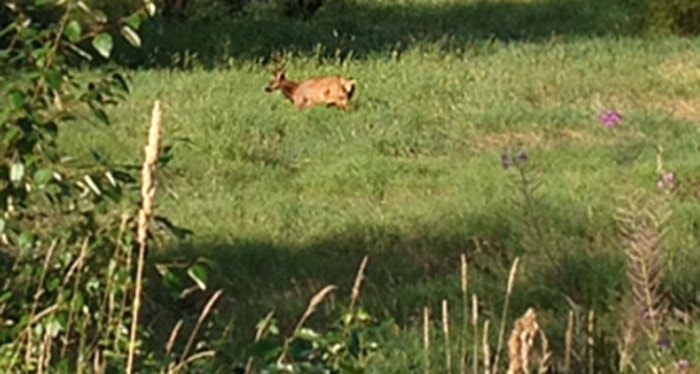Jeff Boyce was driving west across the Kanaka Creek bridge on the Lougheed Highway around 6:30 p.m. Wednesday night when he spotted a pair of elk in a field kitty corner to 7-Eleven.
“They were absolutely massive,” said Boyce. “They had a huge rack of antlers. I’ve never seen anything like that in all my life.”
Boyce pulled over to take a photo with his smartphone. He was concerned for his safety, so he stayed a good distance back and enjoyed the experience. He said the pair of elk eventually made their way back into the forested area around Kanaka Creek.
Boyce then called the provincial conservation office, letting it know what he’d seen.
While the pair of elk were an impressive site, he also had concerns.
“At first I didn’t know what to do,” said Boyce. “When you come across something that big so close to the highway, you’re concerned it may wander on to the road. If someone hit that they could easily be killed.”
He said he was also leery of posting his photo on Facebook for fear of a poacher heading out looking to shoot it down.
“That’s the last thing I would have wanted. They were so impressive,” said Boyce.
The elk could be from the original herd of 23 that was relocated into Upper Pitt Lake in January 2005. The Ministry of Environment took on the project in order to repopulate the area with the Roosevelt elk, which were the native species to the area but were wiped out by at the turn of the 20th Century by hunting. The Roosevelt elk are about one-fifth larger than Rocky Mountain elk.
The ministry repopulated the area in the Upper Pitt Lake in order to take some pressure off black-tail deer as a food source for cougars, as well as to provide other food for wolves and bears.
